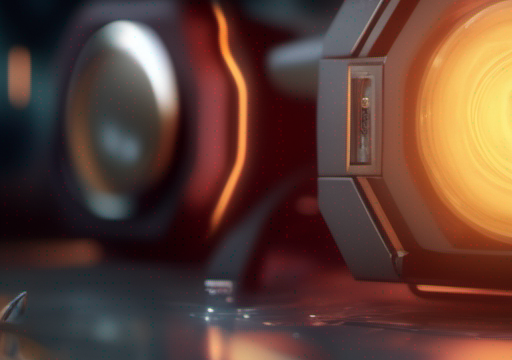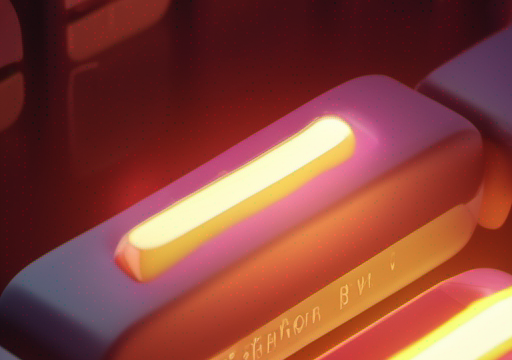🚨 Seriousness of symptom: emergency
Electrical burn, also known as electrical injury or electrical burns, refers to a type of burn that occurs as a result of exposure to electrical energy. 🔥 It can cause damage to the skin, muscles, and other tissues, leading to a range of symptoms. 🤕
What are some common symptoms of Electrical burn? 🤔 Well, the most obvious one is a burning sensation or pain in the affected area. 🔥 However, it can also cause numbness, tingling, or loss of sensation in the skin or muscles. 💭 In severe cases, Electrical burns can lead to cardiac problems, such as arrhythmias or even heart failure. ❓
But how does an Electrical burn happen in the first place? 🤔 It can occur when a person comes into contact with an electrical source, such as a power line, electrical appliance, or even a lightning strike. ⚡️ The electrical current can pass through the body, causing damage to the tissues and organs. 🔥
So, how is Electrical burn treated? 🤔 The treatment depends on the severity of the burn and the underlying cause. In mild cases, the burn may be treated with topical creams or ointments. 💧 However, in severe cases, hospitalization may be necessary to manage the burn and any related complications. 🏥
In conclusion, an Electrical burn is a serious injury that requires prompt medical attention. 🚨 It’s essential to be aware of the risks associated with electrical energy and take necessary precautions to avoid such injuries. 💡 So, always be cautious when working with electrical appliances or around electrical sources! 💪
Hope you found this information helpful! 😊 Do you have any questions or topics you’d like to learn more about? 🤔 Let me know! 😃

Possible Causes – Electrical burn
Electrical burns can be caused by a variety of factors, including direct contact with electrical current, electrical shock, and electrocution. Some possible causes of electrical burns include:
🔥 Direct contact with electrical wiring or appliances
💡 Electrical shock from touching a live wire or electrical device
🔩 Electrocution from coming into contact with a high-voltage electrical source
💣 Exposure to electrical arcs or sparks
🔥 Contact with wet or damp electrical equipment
💣 Contact with damaged or frayed electrical cords or wiring
🔩 Using unapproved or modified electrical equipment
💡 Failure to follow proper safety precautions when working with electrical equipment
🔥 Overloading electrical outlets or circuits
💣 Failure to use proper insulation or protective gear when working with electrical equipment
It’s important to be aware of these possible causes of electrical burns and take steps to prevent them. This can include following proper safety protocols when working with electrical equipment, using protective gear, and being mindful of electrical hazards in the home or workplace. If you experience any symptoms of electrical burns, such as pain, redness, or swelling, seek medical attention immediately.

Diagnosis – Electrical burn
Electrical burns are a serious medical condition that requires prompt diagnosis and treatment. If you or someone you know has been exposed to electrical current, it’s essential to understand the diagnostic process to ensure proper care. In this section, we’ll guide you through the steps involved in diagnosing electrical burns and provide information on how to use our tool, Yesil Health AI, to assess your symptoms. 💻
Step 1: Assess the Situation 💡
The first step in diagnosing electrical burns is to assess the situation and determine the severity of the injury. This involves checking for any visible signs of burns, such as redness, swelling, or blisters, and determining the location and extent of the burn. It’s important to remember that not all electrical burns are visible, so it’s crucial to check for other signs of injury, such as muscle weakness or difficulty breathing. 💨
Step 2: Conduct a Physical Examination 🏥
Once you’ve assessed the situation, the next step is to conduct a physical examination. This involves checking the patient’s vital signs, such as pulse, blood pressure, and temperature, and performing a thorough examination of the burn site. The healthcare provider will also check for any other injuries or complications, such as nerve damage or infection. 🧬
Step 3: Use Yesil Health AI to Assess Symptoms 💻
If you’re unsure about the severity of the electrical burn or if you’re experiencing symptoms that require further evaluation, you can use our tool, Yesil Health AI, to assess your symptoms. This AI-powered tool will ask you a series of questions about your symptoms and provide a personalized assessment and recommendations for further care. 📊
Step 4: Imaging Tests 📸
In some cases, imaging tests may be necessary to confirm the diagnosis of electrical burn. These tests may include X-rays, CT scans, or MRI scans, and can help identify any internal injuries or complications. 📸
Step 5: Treatment and Management 🏥
Once the diagnosis has been confirmed, treatment and management of electrical burn will begin. This may involve surgery to remove damaged tissue, antibiotics to prevent infection, and pain management medication to reduce discomfort. In some cases, rehabilitation may be necessary to help the patient recover full function of the affected area. 💪
Conclusion 👍
Diagnosing electrical burns requires prompt and thorough assessment to ensure proper care. By following the steps outlined in this section and using tools like Yesil Health AI, you can ensure that you or your loved one receives the appropriate treatment and management. Remember, electrical burns can be serious and potentially life-threatening, so it’s essential to take them seriously and seek medical attention immediately if you suspect an electrical burn. 💕

Treatment – Electrical burn
🔥 Electrical burns can be a serious and potentially life-threatening condition, but there are several treatment options available to help reduce the severity of the burn and manage the symptoms.
💡 The first step in treating an Electrical burn is to call emergency services immediately. While waiting for help to arrive, it’s important to keep the burned area clean and dry to prevent infection.
🛠️ Once the burn has been cleaned and the patient has received medical attention, treatment options may include:
💦 Hydrotherapy: Soaking the burned area in cool or lukewarm water can help reduce the severity of the burn and promote healing.
💆♀️ Topical creams or ointments: Applying topical creams or ointments that contain antibiotics or other healing agents can help prevent infection and promote healing.
💔 Pain management: Electrical burns can be extremely painful, so it’s important to manage pain effectively using medication or other methods.
🧖♀️ In some cases, surgery may be necessary to remove burnt tissue or repair damaged skin.
🌱 Herbal remedies: Some herbs, such as aloe vera or chamomile, have anti-inflammatory and antibacterial properties that can help soothe and heal burns.
🧘♂️ Practical relief: Using cool or lukewarm compresses, or taking a cool bath can help reduce the discomfort and pain associated with Electrical burns.
It’s important to note that these treatment options may vary depending on the severity and location of the burn, as well as the individual’s overall health. In all cases, it’s important to seek medical attention as soon as possible to prevent further complications and promote proper healing.

FAQ
🔥 Q1: What is an electrical burn?
A1: An electrical burn is a type of injury caused by electrical current flowing through the body. It can result in severe burns, scarring, and even death.
🤔 Q2: How does an electrical burn happen?
A2: Electrical burns can occur when a person comes into contact with a live electrical wire or electrical appliance, such as a faulty wiring in a home or a malfunctioning electrical device.
🔥 Q3: What are the symptoms of an electrical burn?
A3: Symptoms of an electrical burn can include pain, swelling, redness, and blistering of the skin. In severe cases, it can also cause cardiac arrest, respiratory failure, and even brain damage.
💡 Q4: Can electrical burns be treated?
A4: Yes, electrical burns can be treated with prompt medical attention. Treatment may involve administering antibiotics to prevent infection, managing pain, and providing supportive care to help the body heal.
🤔 Q5: How long does it take for an electrical burn to heal?
A5: The healing process for an electrical burn can take several weeks to several months, depending on the severity of the burn and the individual’s overall health.
🔥 Q6: Can electrical burns leave scars?
A6: Yes, electrical burns can result in scarring, which can be permanent. The severity of the scarring depends on the extent of the burn and the individual’s skin type.
💭 Q7: How can electrical burns be prevented?
A7: Electrical burns can be prevented by taking safety precautions, such as avoiding contact with electrical appliances and wiring, using protective gear, and following proper safety procedures when working with electrical equipment.
🔥 Q8: Can electrical burns cause long-term health problems?
A8: Yes, electrical burns can cause long-term health problems, such as nerve damage, muscle weakness, and respiratory problems.
🤔 Q9: How do doctors diagnose an electrical burn?
A9: Doctors can diagnose an electrical burn by performing a physical examination and using diagnostic tests, such as X-rays or CT scans, to determine the extent of the burn.
💡 Q10: What is the prognosis for someone with an electrical burn?
A10: The prognosis for someone with an electrical burn depends on the severity of the burn and the promptness of medical treatment. In general, the sooner medical attention is received, the better the outcome.
Summary
Electrical burns are a serious and potentially life-threatening condition that can result from a variety of sources, including lightning strikes, electrical faults, and contact with live wires. These burns can be particularly challenging to treat due to the unique nature of the injury, which can involve both thermal and electrical aspects. 🔥💡
The evaluation and management of electrical burns involve a comprehensive approach that includes prompt recognition and resuscitation, appropriate wound management, and close monitoring for potential complications. 💊👀
In this section, we will provide an overview of the key principles of electrical burn management, including the P-SPIKES mnemonic for effective communication with patients and their families. 🤝👫
We will also discuss the various types of electrical burns, their causes, and the signs and symptoms to look out for. 🔍🕰️
By understanding the complex nature of electrical burns and following the appropriate guidelines for management, healthcare providers can improve outcomes for these patients and reduce the risk of complications. 💪🏼👩⚕️
It is important to note that electrical burns are preventable with proper safety measures and education, and by being aware of the potential risks associated with electrical devices. 🔋💡
In summary, electrical burns are a serious medical condition that requires prompt and comprehensive management to prevent complications and improve outcomes. By following the P-SPIKES mnemonic and understanding the unique aspects of electrical burns, healthcare providers can provide effective care and reduce the risk of these injuries. 💯👏
>
https://www.ncbi.nlm.nih.gov/books/NBK430741/
https://www.ncbi.nlm.nih.gov/books/NBK519514/
https://emedicine.medscape.com/article/1277496-overview




